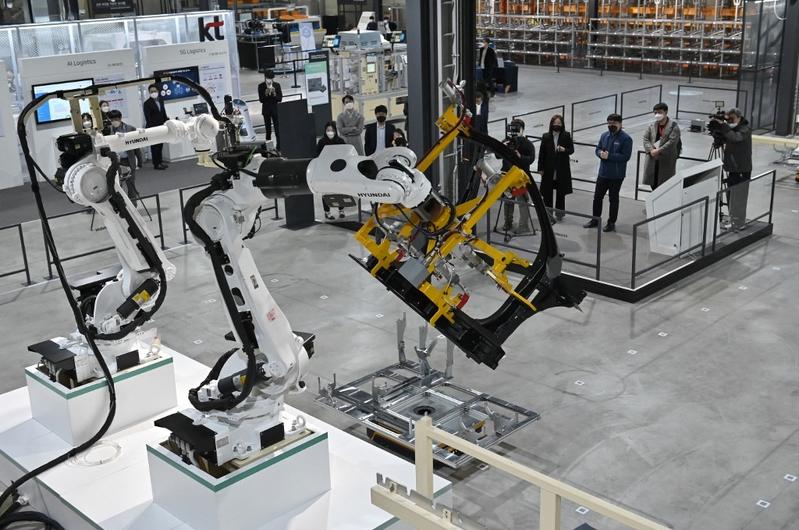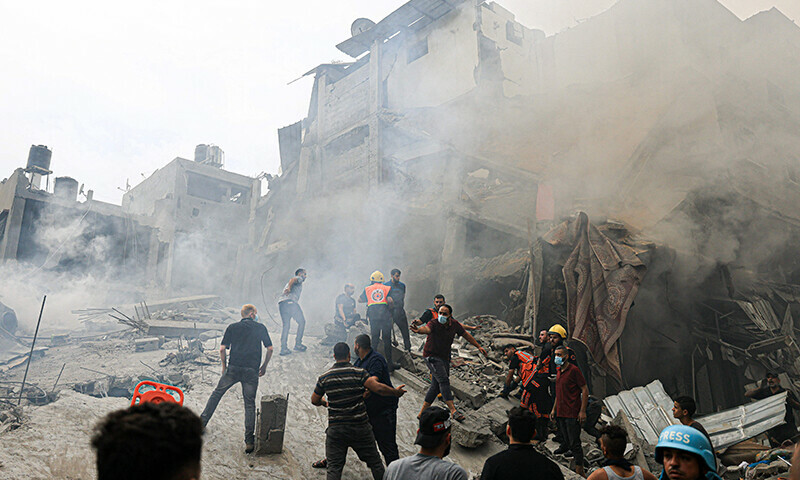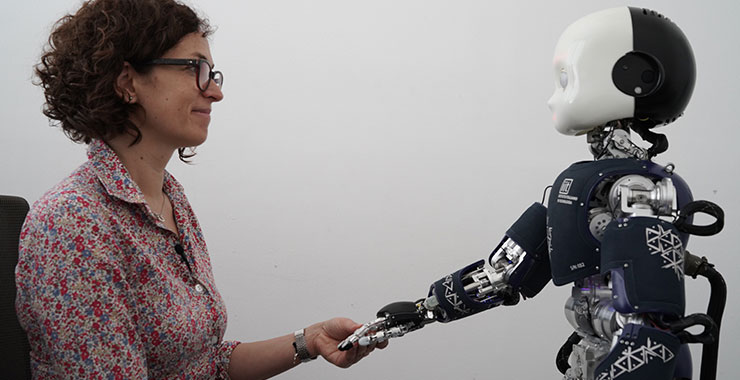뉴스&스피킹(영자신문)
하루 10분이면 영어에 대한 두려움을 극복하고 누구나 유창하게 영어를 구사하실 수 있습니다.
-
 Should You ‘Leave the Leaves’ on the Ground? There is a growing movement to leave leaves on the ground, instead of gathering them to be disposed of.
Should You ‘Leave the Leaves’ on the Ground? There is a growing movement to leave leaves on the ground, instead of gathering them to be disposed of.
The idea is to avoid sending bagged-up fallen leaves to landfills. Instead they will naturally decompose over the winter into rich organic matter. The matter also shelters pollinators and other insects.
Done correctly, leaving the leaves is one of the best ways to turn yard waste into free fertilizer, which is good for plants, the environment, and saving money. But it is important to consider the types of leaves that are falling and where they are landing.
Whole leaves should not be permitted to remain on walkways, where they could make the path dangerously slippery. They should also not be left on grass lawns, where they are likely to cause disease.
Although some grasses can handle a small amount of leaf waste, too much can threaten their health. In areas that experience snow cover, water would become trapped between grass and leaves. That could lead to mold and other fungal infections. In areas without snow, whole leaves that cover grasses block water and sunlight from reaching the soil below.
Many people choose to break up the leaves using a machine and let the pieces to fall between pieces of grass. Then the pieces break down further in the soil. However, this treatment can kill insects and their eggs.
Another method is to take the leaves off the lawn and spread them lightly to cover garden beds. The leaves mostly break down by spring and almost entirely by summer. But if not, they should be removed before spring growth begins.
Leaves also can be used to make leaf mold, a type of compost made entirely from leaves. Just pile them up in a corner, add nitrogen fertilizer, and water it to keep it from drying out. It may take a year or two, but the leaves will break down into a nutritious soil.
Some leaves prevent the growth of other plants. Black walnut, for example, contains a poison in its leaves that kills many plants, including hydrangeas, petunias, apples, peppers, tomatoes and potatoes.
Avoid putting leaves in beds if the leaves are especially large or thick, like those of oaks. Their slow decomposition rates could block sunlight and water from the soil and plant roots.
Fallen leaves are nature’s mulch. They build fertile soil, protect plant roots and shelter wildlife, in your garden, and elsewhere. Why waste that important resource?
I’m Dan Novak.View -
 Industrial Robot Crushes Worker in South Korea South Korean police said Thursday an industrial robot had crushed a worker to death at a vegetable processing center.
Industrial Robot Crushes Worker in South Korea South Korean police said Thursday an industrial robot had crushed a worker to death at a vegetable processing center.
The male worker suffered severe head and chest injuries after the robot’s arms pushed his body against a conveyor belt used to move box containers. The man was treated at a hospital in the southern county of Goseong, but died of his injuries.
Police said early evidence suggested human error was more likely to blame than problems with the robot itself. But investigators were looking into whether the machine was defective or incorrectly designed. The robot was being used to lift boxes filled with vegetables.
Police said the victim of the accident was an employee of a company that deploys industrial robots to businesses. He was sent to the processing center to examine whether the machine was working correctly.
A police official who spoke to The Associated Press (AP) said investigators were looking into the possibility that the robot had misidentified the worker as a box. The machine’s sensors are designed to identify boxes. Security video suggested the man had moved near the robot with a box in his hands and this could have caused the machine’s reaction, the official said.
The machine that caused the death was one of two used at the center to lift and transport boxes loaded with vegetables to be exported to other Asian nations. Such robots are common in South Korean agricultural communities.
A police investigator told the AP the machine was not an “artificial intelligence-powered robot,” but a device designed to just lift and place boxes. He said police were working with related agencies to find out whether the machine had safety issues.
The International Federation of Robotics, based in Germany, estimated South Korea had 1,000 industrial robots per 10,000 employees in 2021. This represents the highest density of industrial robots in the world. Many of these robots are used in manufacturing factories such as electronics and auto-making.
South Korea has had other industrial robot accidents in recent years. In March, a manufacturing robot crushed and seriously injured a worker who was examining it at an auto parts factory in Gunsan. And in 2022, a robot working near a conveyor belt crushed a worker to death at a milk factory south of the capital Seoul.
I’m Bryan Lynn.View -
 Strikes End, But When Will Hollywood Get Back to Normal? Hollywood actors reached a deal to end their four-month strike this week. But it could take some time before you will see your favorite actors on television and in movies again.
Strikes End, But When Will Hollywood Get Back to Normal? Hollywood actors reached a deal to end their four-month strike this week. But it could take some time before you will see your favorite actors on television and in movies again.
The deal permits many actors, writers and technicians to get back to work. And movies and television programs, such as Deadpool, Abbott Elementary, and The Last of Us, are one step closer to returning.
The writers and technicians approved their contract in September after a four-month strike. The actors still have to vote on the deal that their labor union leaders made on Wednesday.
The full terms are not yet available, but leaders say the new deal includes pay increases of more than $1 billion. It also covers concerns such as pay for streaming video and protections for the use of artificial intelligence in creating video and audio.
The group that represents producers of television and movies said the agreement “represents a new paradigm.”
The head of the actor's group is Duncan Crabtree-Ireland. He said the agreement is one “our members can be proud of.”
Here are some questions and answers:
What programs will start filming first?
The strike put an immediate stop to the filming of Deadpool 3 with Ryan Reynolds and Hugh Jackman. That movie and a new Gladiator will likely get back to production first.
In television, shows such as Abbott Elementary, The White Lotus and Yellowjackets should start filming again. Writers for those programs started working when their strike ended earlier this year.
However, some films and television programs recently announced delays. They include Yellowstone with Kevin Costner and the next Mission Impossible movie.
What other changes are coming?
Actors who were on strike did not sit for interviews or talk about their movies and television shows. As a result, some movies did not get a lot of marketing.
One of the actors in the new movie Killers of the Flower Moon is Lily Gladstone. She will now be able to talk about her big role in the movie which also includes Leonardo DiCaprio.
What about the big awards shows?
The Academy Awards, better known as the Oscars, will be back on as usual in 2024. The awards shows will run from mid-January through early March.
Are there any more strikes ahead?
Some strikes could come in the future. Actors who work on video games have approved a strike if negotiations do not work out.
Many actors give their voices and images to video game companies. They are concerned that their voices and faces could be used without their permission in the future.
Another strike could include the people who work behind the scenes in television and movies. Those workers do things such as plan the lighting and create the sets. Their union said its workers have missed out on a lot of money as film and television projects shut down in 2023.
In addition, people who appear on reality television programs such as The Bachelor or The Real Housewives have started talking about forming a union. The people who appear on those programs do not have a labor group and many have talked about difficult working conditions and long days.
I’m Dan Friedell.View -
 How Reliable Are Gaza Health Ministry’s Death Numbers The Health Ministry in Hamas-run Gaza said Monday that more than 10,000 Palestinians have died in the current conflict with Israel. The agency, however, does not differentiate the number of deaths as civilians or combatants.
How Reliable Are Gaza Health Ministry’s Death Numbers The Health Ministry in Hamas-run Gaza said Monday that more than 10,000 Palestinians have died in the current conflict with Israel. The agency, however, does not differentiate the number of deaths as civilians or combatants.
The conflict began after October 7, when Hamas militants attacked Israel. They killed at least 1,400 Israelis, most of them civilians. Hamas also kidnapped an estimated 240 people.
Israel has answered with airstrikes that it says target militants in the territory. Last week, Israeli military forces entered northern Gaza intending to drive Hamas militants from power. Experts expect the number of deaths will rise as street fighting starts in the heavily populated area.
Since foreign reporters and independent organizations are barred from Gaza, the Hamas-run Health Ministry is the only official source for casualties in the territory. The United Nations and other international organizations said the ministry has made a good-faith effort to count the number of deaths under difficult conditions.
Michael Ryan of the World Health Organization said that the ministry's numbers might not be “perfectly accurate.” But he added, “They largely reflect the level of death and injury.”
The recent explosion at al-Ahli Hospital in Gaza showed how difficult it was to estimate the cause and the number of deaths in the conflict.
Hamas militants blamed an Israeli airstrike for the explosion. Gaza’s Health Ministry first reported 200 to 300 deaths in the explosion. Half an hour later, the agency revised the number to 500. The following day, it changed the number to 471.
Israel, the United States and French officials, however, said the explosion was caused by a misfired rocket. And American intelligence estimates the number of deaths at the hospital parking area to have been between 100 and 300.
How Does Gaza’s Health Ministry Count the Numbers?
The Health Ministry says it receives a flow of data from every hospital in the territory.
Hospital officials in Gaza told The Associated Press (AP) that they keep records of every wounded person and every dead. And they enter the information in a computerized system shared with the ministry.
Ashraf al-Qidra is a spokesperson for the ministry. He said when the flow of information is broken because of internet connection or electricity, the agency calls the hospitals to get numbers. The agency also collects data from other sources, including the Palestinian Red Crescent.
Last week, the ministry released a 212-page report listing every Palestinian killed in the war so far, including their names, identification numbers, ages and gender. A copy of the report, shared with the AP, names 6,747 Palestinians and says an additional 281 bodies have not yet been identified.
The list does not say where a person was killed. It also does not differentiate between civilians and fighters or say how they were killed – whether from Israeli airstrikes or Palestinian rocket fire. It describes all casualties as victims of “Israeli aggression.”
Lt. Col. Richard Hecht is an Israeli military spokesman. He said of the report, “When the Hamas health agency comes out with the numbers, take it with a pinch of salt.” In other words, he dismissed the report as something unlikely to be truthful. But he repeatedly refused to state the number of Palestinian deaths.
How reliable are Gaza’s numbers?
International news agencies, humanitarian workers and rights groups have often used the ministry’s numbers when an independent source is not available.
“These figures are professionally done and have proven to be reliable,” said Omar Shakir, Human Rights Watch’s Israel and Palestine director. He noted that the numbers do not differentiate between civilians' and fighters’ deaths.
After the conflict, the U.N. humanitarian office usually publishes final numbers on deaths based on its research into medical records. In many cases, the U.N.'s counts have been fairly close to the Gaza Health Ministry’s numbers.
After the 2008 war, the ministry reported 1,440 Palestinians killed; the U.N. reported 1,385.
In the 2014 war, the ministry reported 2,310 Palestinians killed; the U.N. reported 2,251.
And in the 2021 war, the ministry reported 260 Palestinians killed; the U.N. reported 256.
I'm Dan Friedell.View -
 Do We Need Human-like Robots? Building a robot that is both human-like and useful has been a goal of engineers for many years.
Do We Need Human-like Robots? Building a robot that is both human-like and useful has been a goal of engineers for many years.
Interest in the idea of artificial intelligence (AI) has created another wave of investment in robot technology to build a human-like robot. But most of the current robot models that aim to look like people are not too effective. They appear to work well in planned performances but not in real life. However, this has not stopped some startups from continuing to develop human-like, or humanoid, robots.
“The intention is not to start from the beginning,’” said Jonathan Hurst. He is co-founder and chief robot officer at Agility Robotics. “We’re trying to make robots that can operate in human spaces.”
Hurst said Agility’s robot Digit is designed to do human things. It is not designed to look like a human.
What it does is pick up objects and move them. Amazon announced in October that the company will begin testing the Digit robot for use in some of its storage buildings. Agility opened a factory in the western state of Oregon in September to mass produce their robot.
Digit has a head containing cameras, other sensors, animated eyes, and an upper body that provides power. It has two arms and two legs, but its legs are not human-like. It looks similar to cats and dogs that walk on the very end of their feet, rather than on flat feet.
Competing robot-makers, like Figure AI, are designing robots differently. The company believes that only human-like robots can effectively work in places built for humans.
Figure AI also plans to start developing robots for simpler uses. But it aims to build robots that can perform more than one job to help take over work from humans.
“There’s not enough people doing these jobs, so the market’s massive,” said Figure AI chief Brett Adcock. He said he believes his company can sell millions or even billions of humanoid robots if it can make a robot do a human’s work.
At the moment, however, Adcock’s company does not have a model that is ready. The company was founded just over a year ago after it raised tens of millions of dollars. Figure AI released a 38-second video of its robot, Figure, walking through its building in California.
Elon Musk, head of Tesla, is also trying to build a human-like robot, called Optimus, in the electric carmaker’s robotics division. But a presentation of the robot’s walking last year did not win over experts in the field.
Agility’s Digit robot caught Amazon’s attention because it can walk and move in a way that would work well with the robots the company already uses. Those robots look like vehicles and work in large buildings carrying heavy loads.
Tye Brady is Amazon’s chief technologist for robotics. He said the way the robot moves “is more interesting” than the way it looks.
Agility Robotics co-founder and chief Damion Shelton said its Digit robot is “just the first use case” of a new generation of robots. He hopes people will embrace robots rather than fear them as they enter businesses and homes.
“So, in 10, 20 years, you’re going to see these robots everywhere,” Shelton said. He added: “…Human-centric robots like that are going to be part of human life.”
I’m Gregory Stachel.View

